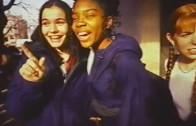Race: The Power of an Illusion
Race: The Power of an Illusion is a three-part series that investigates the idea of race in society, science and history. It navigates through myths and misconceptions, and scrutinises some of the assumptions that are taken for granted. The division of people into distinct categories–“white,” “black,” “yellow,” “red,” and so on–has become so widely espoused and so deeply rooted, that most people do not think to question its veracity. This series challenges the myth of race as biology, and traces its notions to the 19th century, demonstrating how race has a continuing negative impact through institutions and social policies.
Series
Everyone can tell a Nubian from a Norwegian, so why not divide people into different races? That’s the question explored in The Difference Between Us, the first hour of the series. This episode shows that despite what we’ve believed, the world’s peoples simply don’t come bundled into distinct biological groups. We begin by following a dozen students, including Black athletes and Asian string players, who sequence and compare their own DNA to see who is more genetically similar. The results surprise the students and the viewer, when they discover their closest genetic matches are as likely to be with people from other “races” as their own.
It’s true that race has always been with us, right? Wrong. Ancient peoples stigmatised ‘others’ on the grounds of language, custom, class, and especially religion, but they did not sort people according to physical differences. It turns out that the concept of race is a recent invention, only a few hundred years old, and the history and evolution of the idea are deeply tied to the development of the United States.
If race doesn’t exist biologically, what is it? And why should it matter? The final episode, The House We Live In, focuses not on individual attitudes and behaviour, but on the ways our institutions and policies advantage some groups at the expense of others. Its subject is the ‘unmarked’ race: white people. We see how benefits quietly and often invisibly accrue to white people, not necessarily because of merit or hard work, but because of the racialised nature of laws, courts, customs, and perhaps most pertinently, housing.




